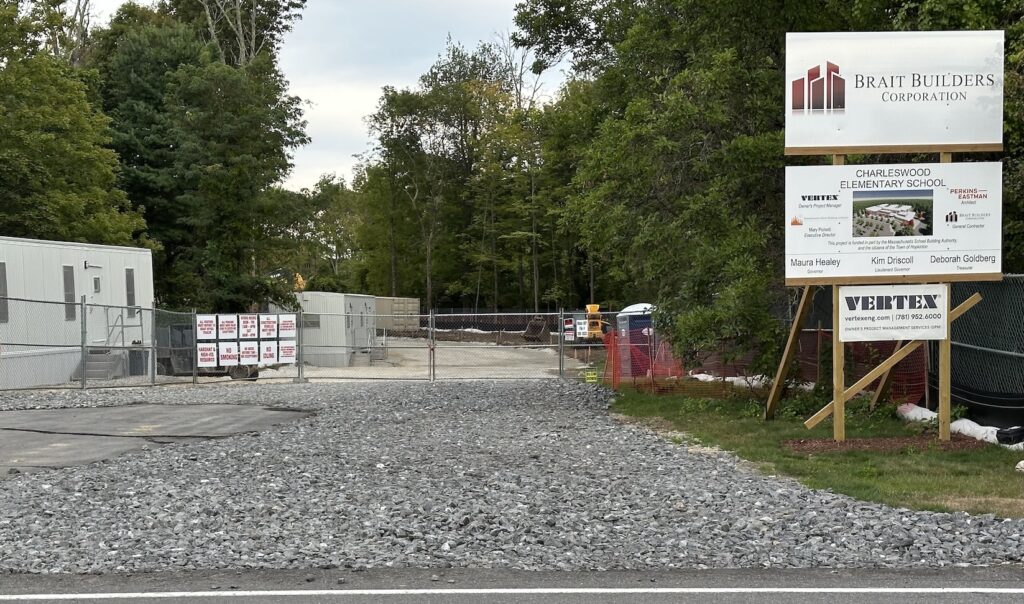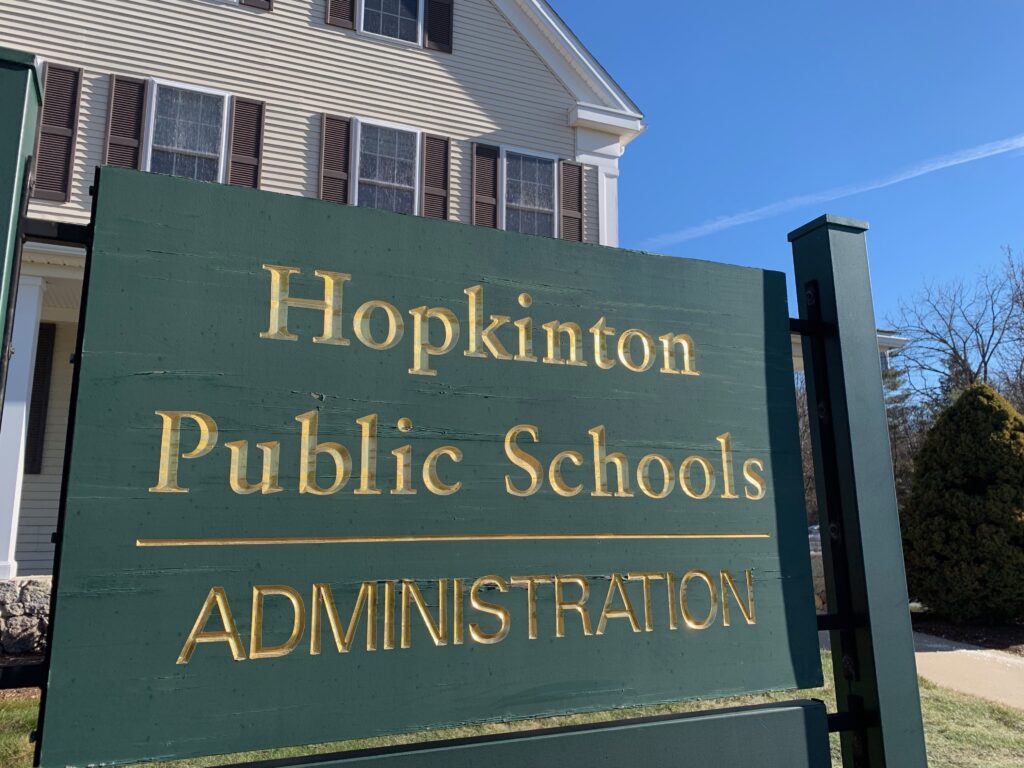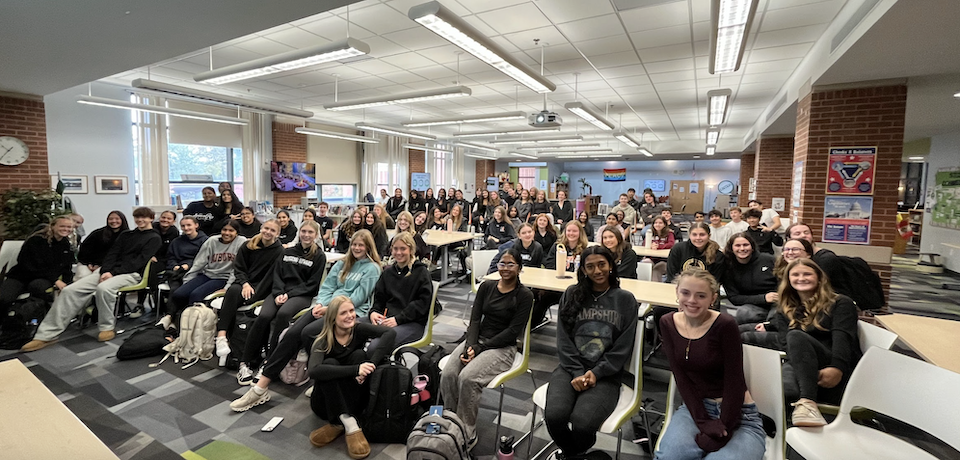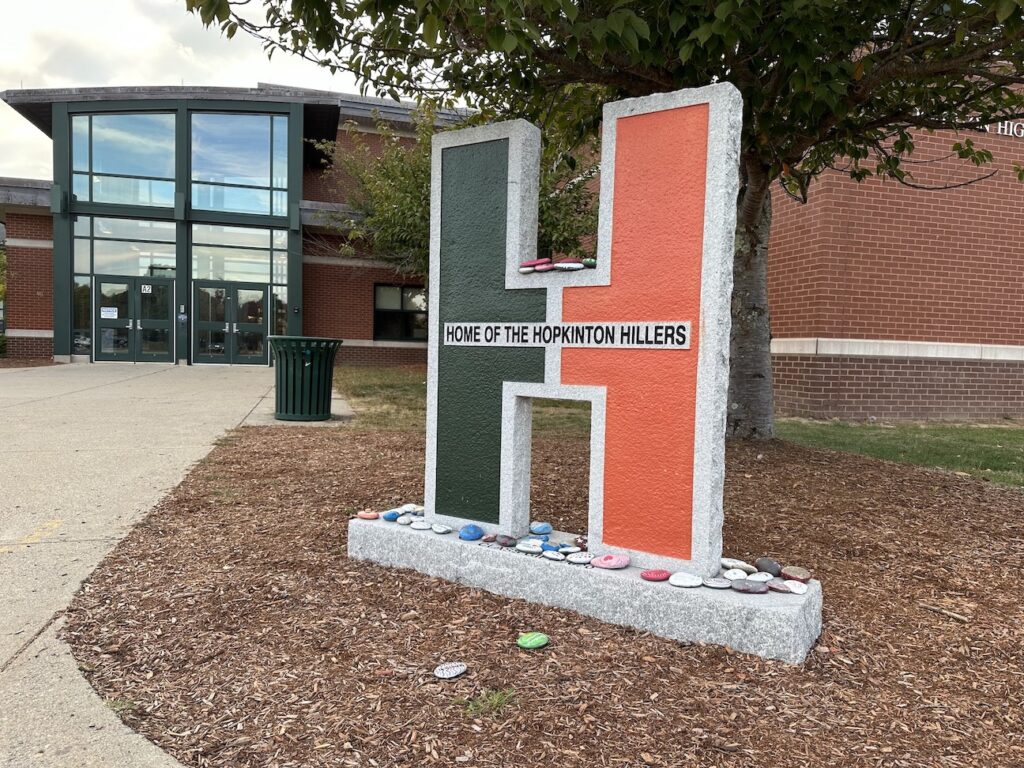Earlier this week, the Charleswood Elementary School project received approvals for its site and stormwater management plans from the Planning Board and Conservation Commission. On Wednesday, Vertex project manager Chris Eberly outlined the next steps to the Elementary School Building Committee, which includes schedules and additional town and state oversight.
The ESBC voted to endorse sending the single Environmental Impact Report (EIR) to the Massachusetts Environmental Protection Agency (MEPA) office. Once it is cleared, it opens the door to the project funding agreement, Eberly said, which means the town starts getting reimbursed for costs to date by the Massachusetts School Building Authority (MSBA).
Acknowledged ESBC chair Jon Graziano: “This is a big milestone for us. … To take the next step to open up the opportunity for the town to start realizing the reimbursement is obviously a significant point in the project.”
At the next meeting, Eberly will bring three proposals forward for the Massachusetts code structural peer review required by the MSBA.
He explained the prequalification process, established in Chapter 146 to determine qualified filed sub-bidders and general contractors who can bid on a project. The process is required when the project has more than $10 million in estimated construction costs.
Eberly said it applies to up to 18 identified classes of work like heating, ventilation, air conditioning (HVAC), electrical, fire protection, etc. Other trades like concrete, steel and drywall are chosen by the general contractor.
He also outlined the criteria and scoring process used so that “you weed out people who have not done something similar so they don’t end up doing a job [of this magnitude] for the first time,” Eberly said.
Prequalification committee established
The ESBC voted to approve a prequalification committee comprised of design representatives Dan Colli and Jessica Vaverchak; owner’s project manager (OPM) representatives Eberly and Chris Kenney; and owner representatives Susan Rothermich, Tim Persson and Mike Shepard.
The target date to award a construction contract and begin work is May 2025.
In other business, the ESBC approved $7,667 for infiltrometer testing costs that the Conservation Commission wanted “to see how quickly water percolates into the soil,” according to Eberly.
Street improvement design is priority
Eberly said a significant step that remains is the street improvement design. That work will be contracted separately from the overall project and involve coordination with the department of public works, town engineer and Select Board.
Eberly said it is appropriate to split building contractors from “horizontal design work,” which can be challenging for them.
The Select Board is the entity to make decisions regarding traffic improvements in the right of way, a traffic light and relocation of utility poles.
Additionally, designers will have to return to the Conservation Commission because the plan requires a notice of intent due to wetlands located north of Hayden Rowe Street.
Eberly said a decision is yet to be made whether to do the road widening improvements or utility pole relocations first. He said there is 9-to-12-month lead time for road work, and relocation of poles also is a lengthy process.
The ESBC will meet next on Oct. 29. Expected on the agenda are the following: approval of invoices for September, structural peer review proposals for the board to consider, third-party code proposals to review, and an update on street improvements if developers can get meetings with town officials.




















0 Comments